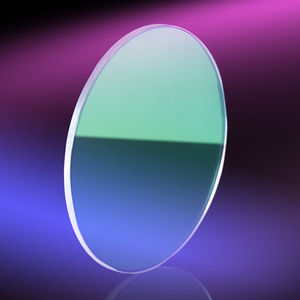What is the difference between the six filters of photons?
It is often said that “the more filters used in photon therapy, the better the effect; the less filters used, the worse the effect”.
This statement is incorrect. In fact, the number of filters has little impact on the treatment effect, while the treatment parameters, skin conditions, and post treatment care methods have greater impact on the treatment effect.
So the question arises. Photon has 6 filters. How to choose? Today, let’s learn about the differences between photonic filters.
01. Reach the skin level
The human skin structure can be divided into epidermis, dermis and subcutaneous tissue.
Different filters can reach different skin layers. From 515nm to 695nm, the larger the number, the deeper the skin layer.

(Yellow column means reaching the skin level)
515nm: superficial layer of epidermis
560nm: full skin layer
590nm: superficial dermis
615nm: middle dermis
640nm: middle layer of dermis
695nm: full layer of dermis, which can reach the hair follicle
02. Application
515nm: light pigment spots with light skin color (such as type 3 skin type).
560nm: pigment spots in the epidermis of type 3-4 skin, telangiectasia of type 3 skin, etc.
No, the two filters above are applicable to skin pigmented spots. The difference is that 515nm is more attractive, and its key word is “shallow”; 560nm is more inclusive, which can treat more types of skin and improve more skin problems.
Pigment (pigment and chloasma of type 4 skin);
Blood vessels (telangiectasia, fresh erythema nevus, burn scar removing redness);
Inflammation (acne, inflammatory rosacea), etc.
Compared with 560, 590 can improve more vascular related problems, while it can also anti-inflammatory.
615nm: color sink, large pores, etc.
640nm: coarse pores, fine lines, rough skin, greasy skin, etc.
615 is similar to 640, and 640 is recommended.
695nm: hair removal, etc.
Although photons can also remove hair, emerald is recommended for hair removal. Now you know that sometimes the two filters have similar functions, For example, both 515nm and 560nm can improve skin pigmentation spots, but 515nm is more suitable for light skin color, and 560nm can be used for both dark and light skin color,
During treatment, one of the two filters can be selected.
03. Examples
Some children’s shoes may question: both 515nm and 560nm can improve the skin pigment, but wouldn’t it double the effect if you played both?
Of course not. For example, our skin is like the stomach. The stomach can only eat a meal, and the skin can only accept energy at a time.
When we want to eat both Lanzhou ramen noodles and spaghetti, we usually choose the one we want more.
The treatment is the same. When the two filters are similar, the doctor will choose the more suitable one according to the skin condition.
If we really can’t give up, we must eat Lanzhou ramen noodles and spaghetti together. What will happen?
There are two cases:
① If you eat enough, your stomach will feel bad;
② I only ate half of each noodle, but I didn’t eat enough, so I wasted food.
Similarly, if every filter must be applied, there will be two kinds of results:
① The skin can not withstand high energy, resulting in adverse reactions;
② In order to avoid adverse reactions, each filter uses very low energy and cannot achieve the effect.
The same applies to other filters.
04. Three sentence summary
The number of filters used in photon therapy has nothing to do with the effect, not the more the better;
There is no difference between some filters, and it is not necessary to use every filter;
Generally speaking, the doctor will select 1~3 filters suitable for you according to your skin condition.



